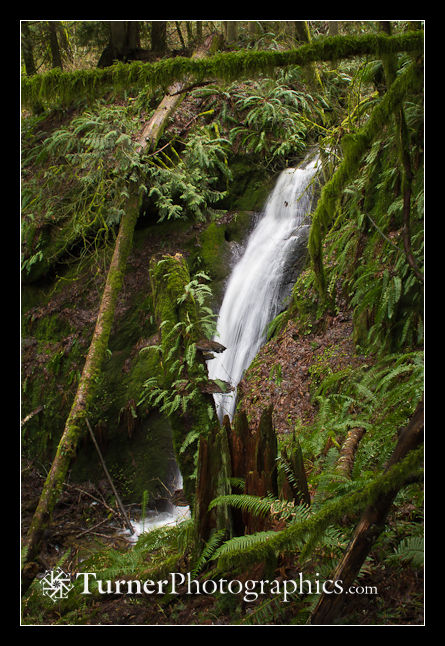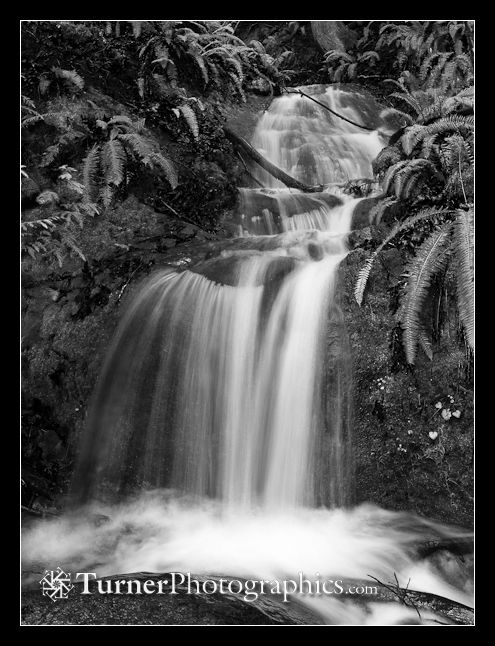Chuckanut Falls
I’m a sucker for waterfalls. There’s just something about the patterns of flowing water that draw me in. They’re not a subject that’s been lucrative but I can’t resist photographing them anyway.

This is Chuckanut Falls, on a tributary to Chuckanut Creek in Arroyo Park just south of Bellingham. There’s a new trail, just built in the last year, leading to the falls. The falls trail takes off from the trail heading up from the Interurban Trail toward Lost Lake. The signed junction is just downhill from the top end of California Street.
I was there on a Koma Kulshan chapter Washington Native Plant Society field trip to look at mosses, lichens, and liverworts (of which there were many). None of us had been to this falls before so we took what should have been a 10-minute side trip from the main trail. At our botanizing pace it took a lot longer.
It’s a nice falls and there’s a viewing platform partially enclosed by a rail fence to discourage tumbling into the gorge. I made this image from below the fence to get the framing I wanted, shooting with my Canon G12 mounted on a tripod. I used the 2-sec self-timer to release the shutter without shaking the camera. An exposure of 1/4 second blurred the water.

This second waterfall is right above the Interurban Trail where it passes through a moist shady spot that looks like it was cut into the sandstone when the railroad was built there. I often see families paused along the trail here to enjoy the falls. With our February rain the creek was flowing nicely.
Again, I photographed with my G12 on the tripod. I converted the image to black and white in Adobe Lightroom. Rather than accept the default conversion, I brightened the green and yellow channels almost to the max to lighten the Sword Ferns and darkened the orange channel to pull down the level of the adjacent soil. I also used the adjustment brush to paint in selective light and dark areas, mostly in the water, to further enhance the contrast. It took all of 3 or 4 minutes to make the adjustments.
I failed to follow my own advice on this trip because I didn’t carry a spare camera battery with me. As soon as I finished photographing this falls my camera shut down with the message that it wanted a new battery. Fortunately, it was the end of the day and I’d already made many nice photos of the field trip subjects.
If you want to see the mosses, liverworts, and lichens, they’re on my PNW Flowers website.


Great post, Mark and nice touch on the BW conversion. I been getting there (B&W) with people shots by a somewhat different route, but for foliage, etc. this is definitely worth a try. Thank you, kind sir.
David, there are many ways to get to black & white from a digital original. Some folks like plug-ins and presets, but having come from film and using filters with b&w film to control how it renders, adjusting digital “filters” makes sense to me. Lightroom makes it pretty intuitive, plus it’s fast and easy to play with the sliders and see what happens. Just remember to stop playing when you get something you like.
You can also make virtual copies and try different combinations of settings. But you probably already knew that.